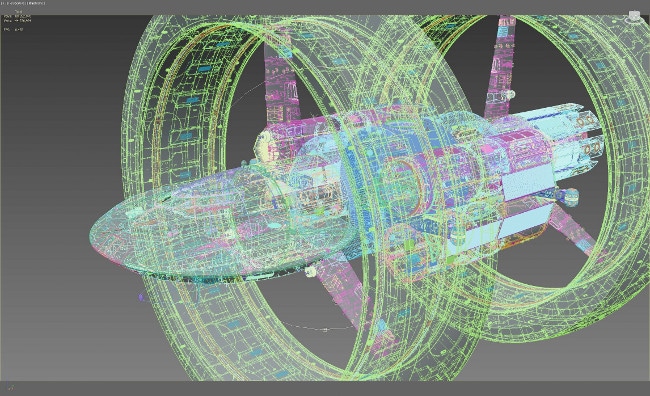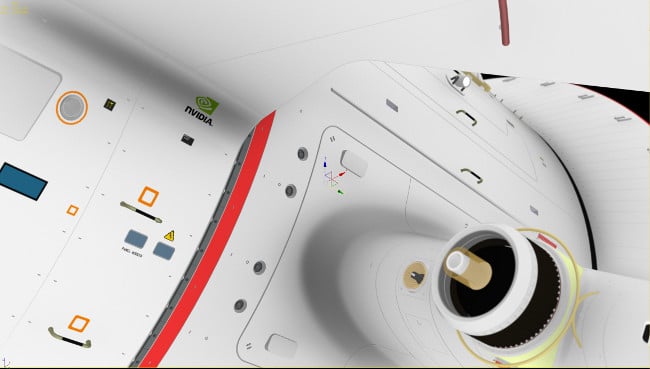Suddenly, the stars don’t seem so far out of reach.
Warp drives have long been the domain of science fiction. NASA physicist Harold White is working to turn them into science fact. Last week he unveiled a stunning set of images showing what such a ship based on research being done by NASA’s Advanced Propulsion Team might look like.
The result: an obscure physics story went viral, getting coverage from scores of national and international news outlets, including CNN, NBC, the Washington Post, Gizmodo, and the UK Daily Mail.
Those images were generated by a Dutch systems administrator and part time digital artist named Mark Rademaker who used NVIDIA GPUs to generate stunning images of what a faster-than-light capable starship based on White’s research might really look like.
Rademaker spent hundreds of hours building a spaceship equipped with the esoteric technology White’s team is researching. Rademaker, a freelance designer who had done work for a number of Star Trek themed calendars, is well known in the science fiction community. But it was only recently that he was introduced to White and his team by another digital artist, Mike Okuda.
The Stars My Destination
To speed across the galaxy, White’s proposed starship relies on what’s known as an “Alcubierre drive.” The drive relies on a ‘cheat,’ to Albert Einstein’s dictum that nothing can travel faster than light. Rather than expending the tremendous energy required to approach the speed of light, physicist Miguel Alcubierre two decades ago suggested a way to – in theory – blast past that limit by bending the fabric of space and time into a bubble around a spacecraft.
It’s an idea that physicists and mathematicians have been toying with ever since, even if many physicists doubt such a drive is practical. At least in the near term. White and his team, however have been working since 2010 to see if the math behind the models can shrink the time needed to reach the stars from years, to days.
White caused a sensation last November at the SpaceVision 2013 conference in Phoenix, when he suggested such an approach might be feasible. “There’s no speed limit on the expansion and contraction of space,” he told attendees “You can actually find a way to get around what I like to call the 11th commandment: Thou shall not exceed the speed of light.”
So what would such a ship look like? White turned to Rademaker to build a model. White translated the math into plan text and visuals, and Rademaker took it from there. “It put massive constraints on the design from an aesthetic point of view,” Rademaker said in an email. “The rings needed to be chunky and donut shaped, [with] the rest of the ship safely tucked within the rings.”
Inspired by Star Trek, Powered by NVIDIA
Of course, any student of science fiction can tell you that Rademaker’s model is informed by much more than mere mathematics. Its sculpted white shape is inspired by everything from the Space Shuttle to the International Space Station to pre-production sketches of a ring-shaped ship for the original Star Trek television series by Matt Jefferies.

To finish his work, Rademaker relied on a PC equipped with an NVIDIA GeForce GTX Titan graphics card and a pair of 30-inch displays. His software: Autodesk 3DS Max 2014 with nPower Software’s Power NURBS and Translators plug-ins. He uses Powernurbs for modeling. For rendering he relies on Arion from RandomControl.
It took Rademaker more than a year, working part time, to get his model done, and no detail is overlooked. The result, the design is full of clever touches, including a nod to NVIDIA. Rademaker hid an Easter Egg with the NVIDIA logo in his design before removing it so that he wouldn’t appear as if NASA was giving NVIDIA an endorsement. No need: We’re just thrilled to be along for the ride.

Images: Mark Rademaker.

 O-Sense
O-Sense







.png)

